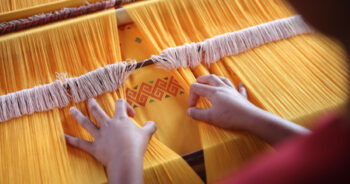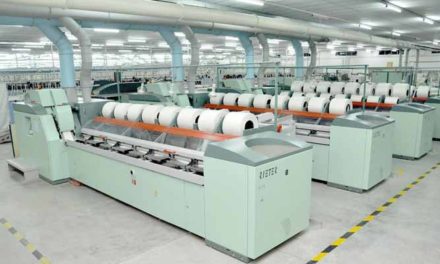Market Overview:
The Handloom Products market stands as a testament to the rich cultural heritage and craftsmanship, offering a diverse range of handwoven textiles that blend tradition with contemporary design. Handloom products encompass an array of fabrics and textiles, including sarees, shawls, scarves, and home furnishings, meticulously crafted by skilled artisans using traditional handloom techniques. In a world increasingly characterized by mass production, the handloom products market represents a commitment to sustainability, craftsmanship, and the preservation of cultural legacies. The global handloom products market is forecast to expand at a CAGR of 9.3% and thereby increase from a value of US$8.3 Bn in 2023, to US$15.6 Bn the end of 2030 as per report published by Persistence Market Research.
Market Growth Factors:
Several factors contribute to the growth and resilience of the Handloom Products market:
Firstly, the rising global awareness and appreciation for sustainable and ethical fashion practices are driving the demand for handloom products. Consumers are increasingly seeking alternatives to fast fashion, drawn to the uniqueness and authenticity that handwoven textiles offer. The environmentally friendly and socially responsible aspects of handloom production, which often involves the use of natural fibers and supports local artisan communities, resonate well with conscious consumers.
Secondly, the revival of traditional craftsmanship and the promotion of indigenous artistry contribute significantly to the market’s growth. Governments, non-profit organizations, and the fashion industry are actively involved in initiatives that support and empower handloom weavers. This renewed focus on preserving traditional weaving techniques, patterns, and designs not only sustains cultural heritage but also fuels innovation as artisans incorporate traditional aesthetics into contemporary products, appealing to a broader consumer base.
Moreover, the trend of “slow fashion” has gained momentum, encouraging consumers to prioritize quality over quantity and invest in timeless, durable pieces. Handloom products align seamlessly with the principles of slow fashion, as they are often characterized by meticulous craftsmanship, durability, and a connection to cultural narratives. The inherent value of handloom textiles lies not only in their aesthetic appeal but also in the stories, skills, and heritage woven into each fabric.
Furthermore, the e-commerce boom has played a pivotal role in expanding the reach of handloom products beyond local markets. Online platforms provide a global marketplace for artisans and handloom weavers, enabling them to showcase their creations to a diverse audience. This digital shift has not only broadened the market scope but also facilitated collaborations between traditional artisans and contemporary designers, leading to innovative, fusion designs that bridge the gap between tradition and modernity.
Opportunities
The handloom products market is undergoing a revival, fueled by a growing appreciation for sustainable and artisanal goods, a resurgence of interest in traditional craftsmanship, and a global shift towards conscious consumerism. As consumers seek unique and culturally rich products, the handloom industry presents a tapestry of opportunities that blend heritage with contemporary demands.
One significant opportunity within the handloom products market lies in the rising demand for sustainable and eco-friendly textiles. As environmental concerns prompt consumers to reevaluate their purchasing habits, handloom products stand out for their low environmental impact, utilizing traditional weaving techniques and natural fibers. Manufacturers and artisans have the chance to capitalize on this trend by promoting handloom textiles as a sustainable alternative to mass-produced, machine-made fabrics, fostering a connection between consumers and the rich cultural heritage embedded in each handwoven creation.
Moreover, the handloom products market benefits from the increasing global interest in authentic and culturally significant products. Handwoven textiles often carry a unique narrative, reflecting the history, traditions, and artistic expressions of the communities that produce them. In an era where consumers seek to connect with the stories behind their purchases, handloom products offer a compelling value proposition, allowing individuals to own pieces of cultural heritage while supporting traditional craftsmanship. By emphasizing the cultural significance of handloom textiles, market participants can create a sense of authenticity that resonates with discerning consumers seeking meaningful and ethically produced goods.
The emergence of e-commerce platforms provides an additional opportunity for the handloom products market to reach a broader audience. Online marketplaces allow artisans and small-scale handloom producers to showcase their products on a global scale, breaking down geographical barriers and connecting craftspeople directly with consumers. This digital transformation enables the handloom industry to thrive in the modern marketplace while preserving its traditional roots, fostering economic empowerment for artisans and promoting cultural exchange on a global level.
Market Trends:
A prominent trend in the handloom products market is the emphasis on sustainability and eco-friendliness. Consumers are increasingly seeking products with minimal environmental impact, leading to a preference for handloom textiles made from natural fibers like cotton, linen, and wool. This trend aligns with the global movement towards ethical and sustainable fashion, encouraging the use of traditional handloom techniques that often involve low energy consumption and limited chemical use.
Another noteworthy trend is the integration of handloom products into contemporary fashion and lifestyle segments. Designers and brands are collaborating with traditional weavers to create modern, stylish interpretations of handloom textiles. This fusion of traditional craftsmanship with contemporary design aesthetics has widened the appeal of handloom products, attracting a diverse consumer base that values both cultural heritage and fashion-forward choices.
Market Challenges:
Despite the positive trends, the handloom products market faces challenges related to scalability, accessibility, and competition from mass-produced alternatives. Traditional handloom practices are often time-consuming and labor-intensive, leading to limitations in production capacity. Additionally, the lack of access to modern technologies and market channels can hinder the reach of handloom products to a broader audience.
Furthermore, the market must contend with the competition from machine-made textiles that can offer lower prices and higher production volumes. Striking a balance between maintaining the authenticity and uniqueness of handloom products while addressing scalability and cost challenges is crucial for the sustained growth of this market.
Latest Developments:
Recent developments in the handloom products market highlight efforts to leverage technology and innovation to overcome traditional challenges. E-commerce platforms and online marketplaces have emerged as powerful tools to connect handloom weavers directly with consumers, eliminating intermediaries and expanding market reach. This digital transformation allows artisans to showcase their products to a global audience, fostering economic sustainability for traditional weaving communities.
Additionally, initiatives promoting skill development and training in handloom weaving techniques are gaining traction. Collaborations between government bodies, non-profit organizations, and private enterprises aim to preserve and promote traditional handloom practices. By providing training, access to resources, and market linkages, these initiatives contribute to the preservation of cultural heritage and the empowerment of artisan communities.










